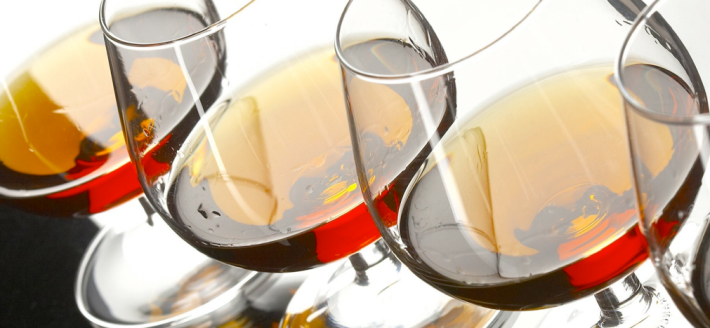Tagged: booze
Old is Gold
This was supposed to the preamble for a cognac feature I was doing. Only a little bit of the intro had to change, but it made a whole lot of difference. – CL
It was Winston Churchill’s drink. It’s been the muse of rappers. It was probably your old man’s after dinner tipple of choice and some unlettered old man’s all-night fuel. But really, good sipping cognac should now be your drink. It can be sweet in some bottles and fiery in some. Chocolate on the nose? A whiff of leather? Cognac can be many things to a variety of people, but it will never be boring.
Years of resting in oak casks, taming the distillate of grapes too acidic for wine, will do the trick. This eau-de-vie (French for “water of life”), need only spend two years ageing in barrels in the town of Cognac to bear the eponymous name, but any of the stuff really worth drinking is usually aged over 20 years, sometimes using eaux-de-vie over a century old.
Understandably, an older spirit that’s been painstakingly loved into existence will boast greater complexity in flavour and aroma. This is why the VS (“Very Special) and VSOP “Very Superior Old Pale”), aged a minimum of two and four years respectively, are better suited to the mellowing powers of a cocktail.
But if you want to spend an evening with the fellas, talking about the good old days with a drink that’s older than your childhood, you can rarely go wrong with an XO (now “Extra Old”, once “Age Unknown”), aged at least six years – but rarely stays at that guideline.
After all, nothing that young commands the kind of premiums people fork out for a really good bottle of XO – it’s not just the liquid equivalent of velvet, it’s also more precious thanks to 4 per cent of it evaporating into the air every year (also known as the “angel’s share”). So the next time you have a beautifully aged cognac in hand, know that you’re about to savour what ancient barrels have desperately guarded for years – stories of sun-ripened grapes and seasoned wood – just for your sipping pleasure.
Martini Madness
I wrote this story for Gourmet & Travel but the angle got changed so I had to rewrite the whole thing. This is the original, which I think doesn’t suck anyway, so I just thought I’d leave it here. – CL
Ernest Hemingway mixes his martini with 15 parts of gin to one part of vermouth, while Winston Churchill and Alfred Hitchcock agree that the best way to enjoy vermouth with a martini was to look at it from across the room. Julia Child, on the other hand, fills up her glass with vermouth and ice and adds just a splash of gin at the end. Despite the fact that a classic martini only has those two ingredients, it’s become arguably the most referenced and diverse cocktail around. And its fame has brought about a swarm of different ways to enjoy it.
Ian Fleming’s James Bond for instance, throws in vodka and Kina Lillet (a fortified wine not unlike vermouth, now more commonly substituted by Lillet Blanc because of the former’s unavailability) into the mix, and famously insists it be “shaken, not stirred”, unusual for a cocktail that is traditionally stirred to prevent too much ice dilution. Originally fictional, now his “Vesper” martini can be found on many cocktail menus.
And it’s not just the method that has evolved, but the ingredients as well. Martini trends have moved from simply adding fruit liqueurs, to including ingredients that are traditionally eaten, not swilled. Australian cocktail joint Clive’s introduces a toothsome Grilled Cheese and Tomato Soup martini while watering holes here have been known to stir up dessert-inspired creations (Martini Bar’s Tiramisu martini) or those with Asian influences (Kinki’s Saketini).
Though purists may argue that the simple, harder-than-it-looks-to-perfect martini has been bastardised with its many frills and interpretations, there is an upside: Everyone will be able to find one to suit their tastes. Cheers.

